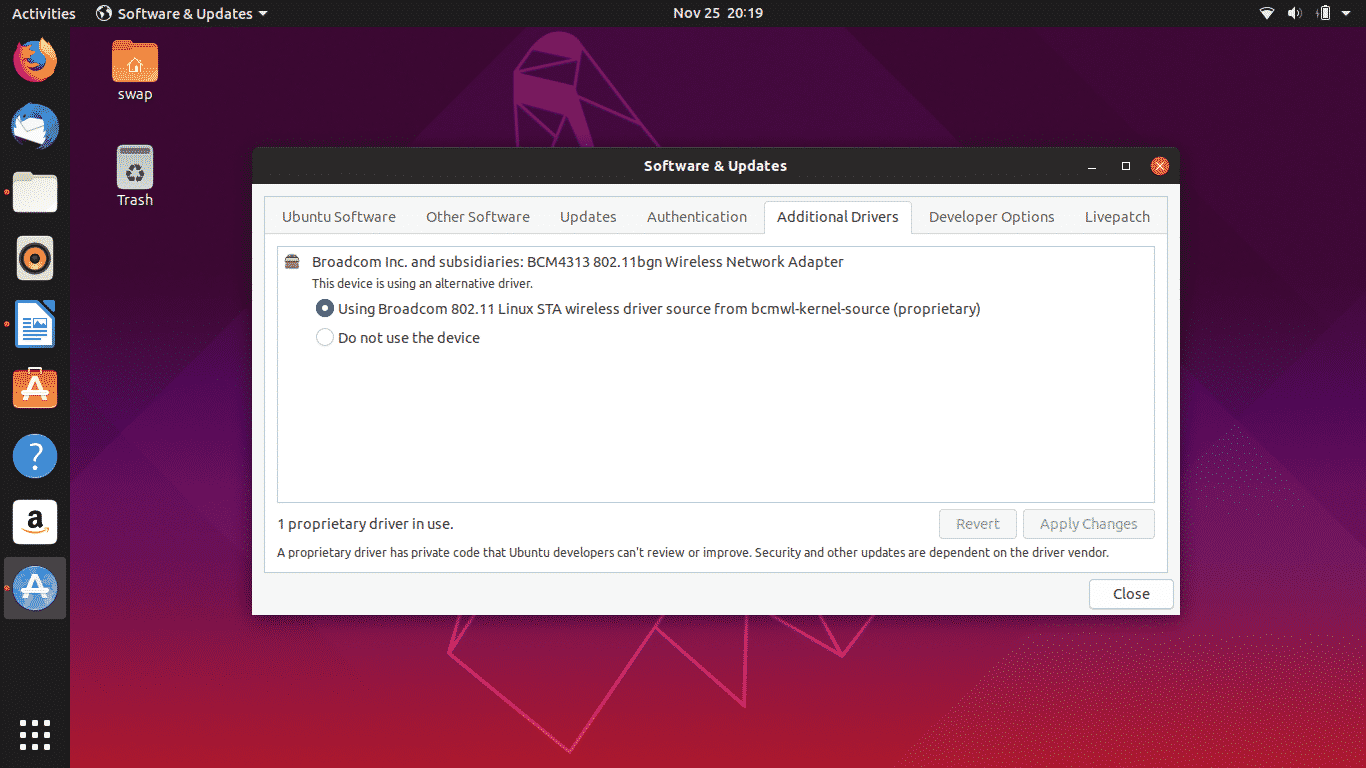
- #How to add to additional drivers for ubuntu install#
- #How to add to additional drivers for ubuntu drivers#
- #How to add to additional drivers for ubuntu driver#
The lspci command shows detailed information about all PCI buses and devices on the system: $ lscpci
#How to add to additional drivers for ubuntu driver#
This is beyond the scope of this article, but you should be able to find online guides if you choose to go this route.īefore jumping further into installing a driver in Linux, let's look at some commands that will determine whether the driver is already available on your system.
#How to add to additional drivers for ubuntu install#
This usually involves downloading a package directly from a website or using the wget command and running the configuration file and Makefile to install it.
#How to add to additional drivers for ubuntu drivers#
Ubuntu offers the Additional Drivers option. If you are new to Linux and coming from the Windows or MacOS world, you'll be glad to know that Linux offers ways to see whether a driver is available through wizard-like programs. To learn more about how Linux drivers work, I recommend reading An Introduction to Device Drivers in the book Linux Device Drivers. And Ubuntu asks users to avoid using proprietary or closed hardware. For example, Fedora prohibits including drivers that are proprietary, legally encumbered, or that violate US laws. Third, license policies vary among the different Linux distributions. Second, most default Linux drivers are open source and integrated into the system, which makes installing any drivers that are not included quite complicated, even though most hardware devices can be automatically detected.

Each Linux operating system handles the driver installation process a different way. This means it's impossible to create one how-to guide that works for all Linux distros. For one reason, Linux is an open source operating system, so there are hundreds of Linux distribution variations. This process isn't as easy on a Linux operating system.


Personally, as a non-gamer, I must say I find NVIDIA’s labels a tad confusing ( and I’m not alone) but I believe the general gist is: You’ll also notice in the mockup above, which I pulled from the Ubuntu Wiki on the Software & Updates utility, that NVIDIA’s “Long Lived” and “Short Lived” terms are being used here. actually looking like information and not just part of the package name): Other info, like the specific driver version number and the license that the driver is distributed under get styled in a more consistent, useful manner (i.e.


 0 kommentar(er)
0 kommentar(er)
